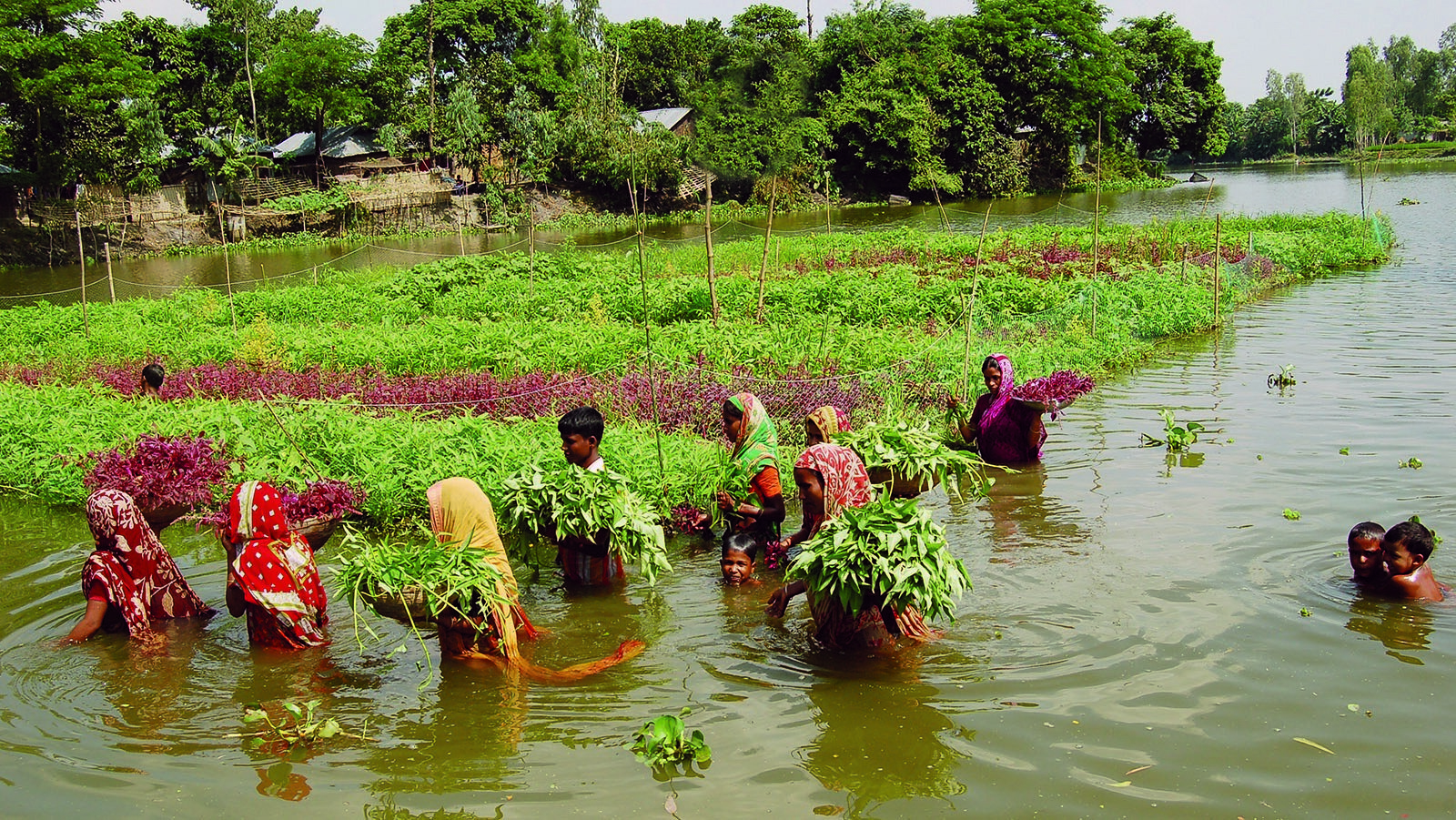

Photo by Water Alternatives Photos
By Caroline Poskrobko | Rutgers Green Print
This story was produced in collaboration with Rutgers Green Print and CivicStory as part of the Ecology-Justice Reporting Fellowship.
Most know that the effects of climate change disproportionately affect the world’s most vulnerable populations. This is true everywhere—from underfunded urban and rural areas here in NJ to developing countries around the world, where a combined lack of support, resources, and infrastructure continually threaten local communities. But while many people stateside focus on carbon emissions, waste, and new tech that mitigates climate change, developing countries are demonstrating that centuries-old practices are an essential part of the fight. Bangladesh, an agricultural nation comprising two-thirds wetland, is one such country—where an ancient hydroponic farming technique has reemerged as a beacon of hope.
In the south and southwestern districts of Gopalganj, Barisal, and Pirojpur, Bangladeshi farmers are reviving floating water gardens. Known locally as baira, they have been used for over 400 years as a traditional method of crop cultivation. Buoyant, raft-shaped organic plant beds, water gardens mix weeds like water hyacinth or paddy stalks with cow manure and silt to grow vegetables such as okra, spinach, and bitter gourd.
This is no small thing. Bangladesh is often referred to as the “land of rivers”; the nation’s intricate waterways network and low-lying topography leave it highly susceptible to flooding. Certain regions spend about eight months underwater annually. In 2019, an International Monetary Fund report warned that Bangladesh is expected to lose 30% of its food production by 2050. That’s where water gardens come in.
Rising and falling with the tide, water gardens are typically 20 feet long but can grow as large as 180 feet. Hydroponic farming stands out for its dynamic nature, durability, and capacity to feed many. These gardens have once again become an integral part of Bangladesh’s agricultural practices, providing sustenance and ensuring food security where arable land is scarce. In an interview with the BBC, a farmer in the Barisal district noted that floating gardens are more productive than those on land and provide a greater abundance of nutritious food for local communities since their implementation.
Beyond their agricultural importance, they support the local economy by providing opportunities for income generation and job possibilities for laborers, farmers, and artisans involved in the construction and maintenance of water garden infrastructure. And, critically, they are deeply rooted in the cultural heritage of Bangladesh, reflecting knowledge that has been passed down for generations.
Our fixation on developing new tech in the climate fight can lead us to overlook what we’ve already learned. Mohammed Rezwan, founder of a Bangladeshi non-profit organization working to help disadvantaged people in flood prone regions, stated in a New York Times story that floating water gardens have the potential to be replicated around the world. As most know, New Jersey faces its fair share of flooding, especially in the past few decades. Cities like Hoboken and Newark, where flooding is a constant risk, might consider adopting water gardens as a supplement to their growing urban farming industries. The sooner we recognize that centuries-old learning has a place in our climate activism, the sooner we can develop tangible solutions at the local level.

This story was produced in collaboration with Rutgers Green Print and CivicStory as part of the Ecology-Justice Reporting Fellowship.
Caroline Poskrobko is a senior Honors College student at Rutgers University who is double-majoring in environmental science and journalism and media studies. At Rutgers, she is a writer for the university’s environmental magazine, RU Green Print.
